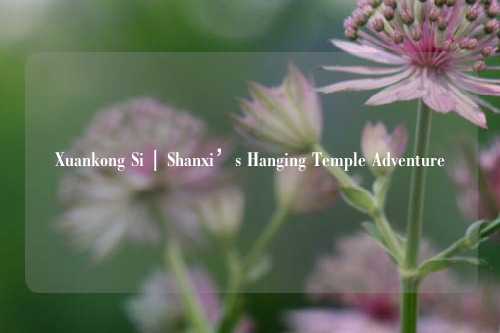Xuankong Si | Shanxi’s Hanging Temple Adventure
Dive into the breathtaking world of Xuankong Si, Shanxi’s iconic Hanging Temple, a marvel of ancient Chinese architecture perched precariously on a cliff face. Discover the history, culture, and natural beauty that make this site a must-visit for travelers seeking adventure and spiritual inspiration.
The Wow Factor of Xuankong Si

Nestled in the heart of Shanxi Province, Xuankong Si, or the Hanging Temple, is one of China’s most extraordinary religious sites. Perched on the side of a sheer cliff, this temple seems to defy gravity, leaving visitors in awe of its very existence. The combination of stunning natural scenery, historical significance, and architectural ingenuity makes Xuankong Si a true gem of Chinese heritage.
A Glimpse into History
Constructed during the Northern Wei Dynasty (386–534 CE), Xuankong Si is one of the earliest surviving examples of suspended architecture in China. It stands as a testament to the ingenuity and creativity of ancient Chinese builders, who managed to carve out a temple from the cliff face and suspend it using a sophisticated system of beams and brackets. Over the centuries, the temple has undergone several restorations, particularly during the Tang (618–907 CE) and Ming (1368–1644 CE) dynasties, ensuring its survival for future generations to admire.
Architectural Marvel
The temple’s design is nothing short of . Its 18 halls and pavilions are built into the cliff face, with some rooms seeming to literally hang in mid-air. The use of dougong (a Chinese bracket system) allows the structure to remain stable despite its precarious position. The engineering feat is even more impressive when you consider that modern construction techniques were unavailable at the time of its construction.
The temple’s layout reflects the principles of feng shui, as it is oriented to align with the natural contours of the mountain. Each hall is dedicated to different deities and Buddhas, showcasing the diverse religious influences that have shaped Chinese Buddhism over the centuries.
















